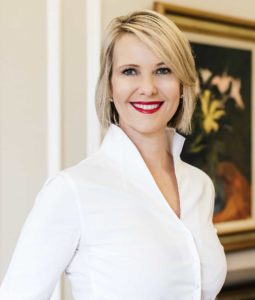
Christelle Colman, MD of Elite Risk Acceptances, a wholly-owned subsidiary: Old Mutual Insure
The global pandemic may have changed the world, but for the super-rich, who spend their money on flash properties, fast cars, super yachts, luxury handbags and other goods, COVID-19 only increased their spending power.
According to Statista.com, the world’s leading billionaires added over one trillion dollars to their collective wealth during the pandemic. We continue to see that the ultra-high net worth investor, informed by uncertainty, looks for alternative asset classes to diversify portfolios and provide resilient returns throughout different stages of the pandemic. COVID-19 brewed pent-up demand, resulting in a spending spree. This may explain why Hermes handbags were the best performing luxury collectible for price growth in 2020, up 17%, followed by fine wine (up 13%) and ostentatious cars 6%, according to KnightFrank’s Luxury Investment Index. Furthermore, according to the Wealth Report 2020, SA is the largest wealth market in Africa and the 32nd largest worldwide in terms of total wealth held. It suggests that the SA luxury sector generates revenue of approximately $2 billion per year, making it the largest luxury market in Africa for cars, yachts, clothing, accessories, watches and luxury hotels and lodges.
Yet, unique challenges plague SA’s wealthy when it comes to protecting their wealth against risks. Surprisingly, despite spending mega money, we continually see high levels of underinsurance on high ticket items. In the context of South Africa, in which crime is rife and often sophisticated, this is very risky.
This can be attributed to the complicated risk management needs of the ultra-rich, who often also make the mistake of over-insuring against low risk threats. This can be especially devastating for those with tangible collections of passion investments, whether it be classic cars, jewelry, or art. Investors with sizeable collections often assign a substantial amount of sentimental value to their collections, but do not always realise their financial value.
In South Africa, the wealthiest investors prefer to have collections in art (approximately $480 million worth of fine art is held by SA’s HNWIs), classic cars, jewelry, fine wine, and watches. Watches under the Patek Philippe name brand, both classic and new, fetch the highest prices by HNWIs, according to the SA Wealth Report 2020. Data suggests that many of the super wealthy are clueless as to the value of their collections, and therefore don’t insure it. A USA study suggests that of 2,475 investors who can be classified as wealthy, 44% have not had their collections insured. It also found that roughly 40% of wealthy collectors don’t know the full value of their collection, while 51% have never had their collection appraised.
Advisors to wealthy investors should carefully consider their unique risks. As the numbers of the super-rich rise, so too may the under-insured and over-insured. Yet, it pays them to look after their collectibles and assets. The world’s ultra-wealthy population with a net worth of US$30 million rose 2.4% to 520,000 in 2020, despite the global downturn. The world added eight billionaires a week in 2020, according to Hurun Global Rich List 2021.
Back home, the Knight Frank Wealth Report 2021 suggests that there were 44 605 dollar millionaires living in South Africa as of December 2020. This number is expected to grow to 63 400 by 2025. It also suggests that Africa is expected to see the second biggest regional five-year growth in ultra-high net worth wealth investors (UHNWI), a rate of 33% – led by Zambia and South Africa. So how can the super-rich take adequate steps to protect their assets against complicated risks? My top three take-outs.
- Ownership of assets: HNWI tends to register ownership of their assets in private entities such as trusts, companies, and closed corporations. Brokers must work closely with their clients to understand the ownership structures of all assets – as they would for ensuring a business with multiple entities – to ensure that insurance cover is properly coordinated and adequate risk protection is being provided.
- Employee-related risks: HNWI hire a number of employees to help run their households. Employees bring about risk exposures related to inside job armed robberies and threat of force to the insured families. Wealthy individuals should adopt stringent protocols when hiring as well as terminating employees. Procedures should include background checks, onboarding protocols, regular performance reviews, and the like.
- Security risks: Security at home and during travel, including the risks of political turmoil and global conflict, remains a top concern for HNWI. For wealthy families with complex risk exposures, particularly considering the environment of violent crime in South Africa, it is highly recommended that a security expert is consulted. These experts typically provide a full risk assessment that would minimise any security breach, such as home intrusions, a cyber-breach or any other issue that could put the family at risk.


